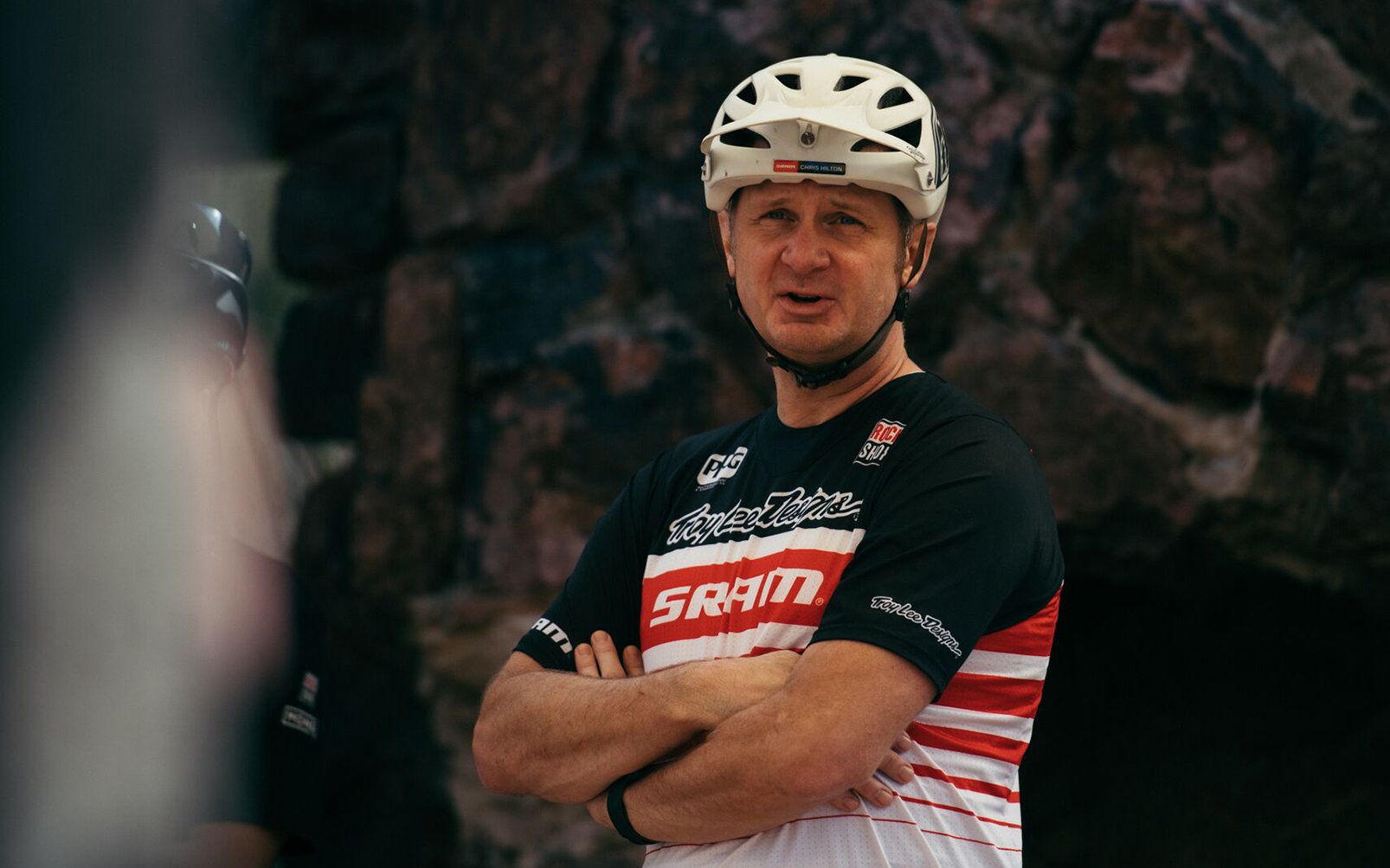
The Man Behind SRAM's new Wireless Group
INTERVIEW - SRAM AXS Boss Chris Hilton
Sometimes it's hard to recognize the future when you see it, but the AXS electronic wireless group appears ahead of its time. Convenience, reliability, precision, and durability all seem to be in place. My derailleur regularly seems to get some kind of bump or knock, either on the trail or in transport, that causes either hesitation or excess noise. That has to accelerate drivetrain wear, which is less than ideal considering the price of an Eagle cassette. With AXS it seems imprecise shifts and poor adjustment or alignment could become things we tell our grandkids about.
AXS is not your average mountain bike project; it involves wireless communication, batteries/charging, motors, sensors, entirely new shifter/dropper engagement levers etc. The interplay of electronics and mechanics - particularly wireless electronics - is a brave new world in mountain biking. Getting electrical engineers, designers, mechanical engineers, athletes, product managers and software developers (etc.) to communicate effectively is on its own a monumental task, particularly when they are spread around the world in Portugal, Germany, Taiwan as well as California, South Dakota and Illinois in the US.
Chris Hilton was also the man in charge of the Eagle project so he knows a thing or two about hitting home runs and getting products to market fully baked. Here's what he had to say about his freshly launched project.
In case you missed it, we have ride impressions here, and full specs and prices here...
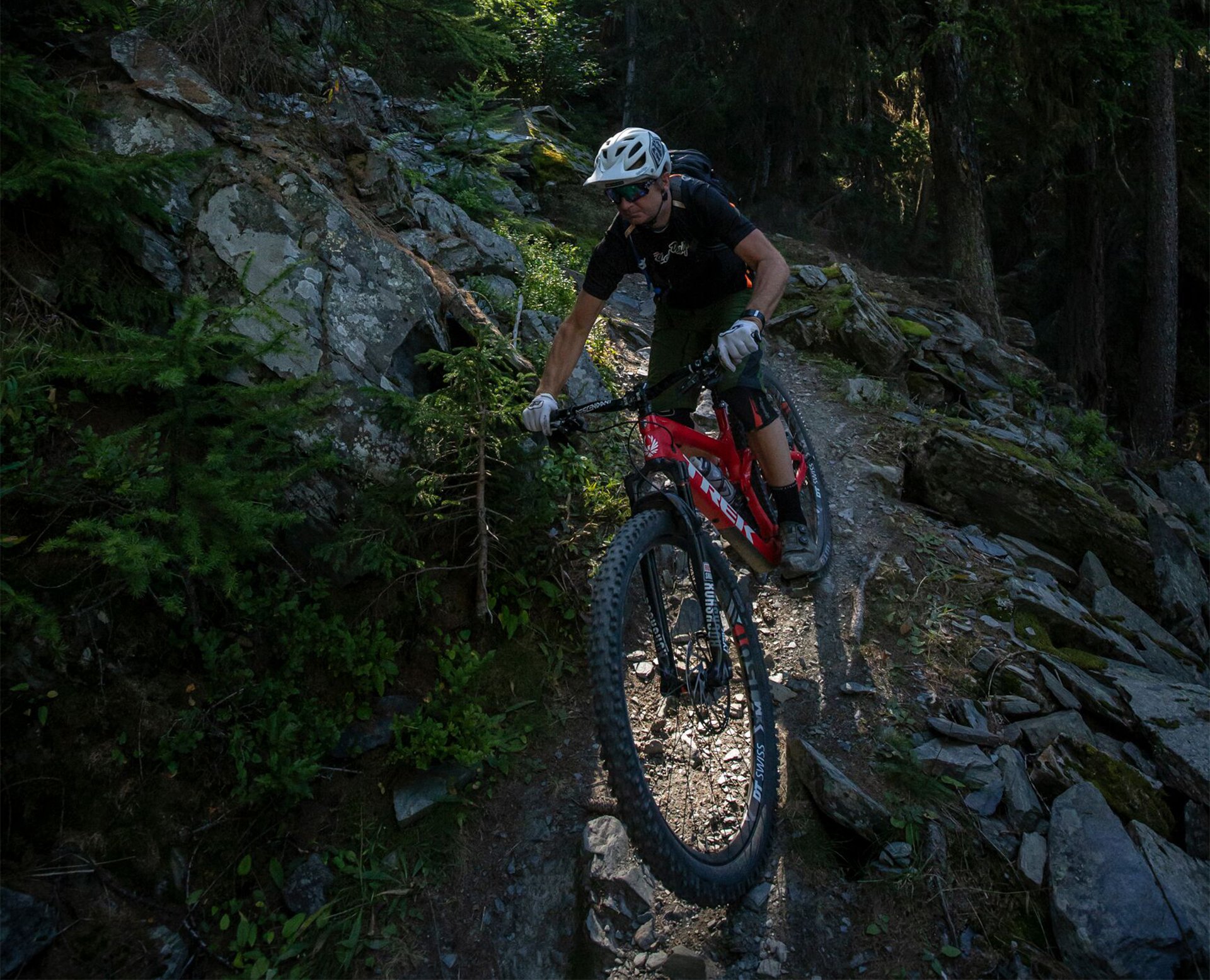
Product development in the bike industry has some upsides. Photo - Adrian Marcoux
NSMB - AXS presents some obvious advantages - but you could argue that these are advantages over a system that is already close to optimal. At the beginning what were you trying to achieve with AXS that isn't possible - or that could be improved - over current Eagle and Reverb products?
Chris Hilton - I agree that existing systems are pretty good. But there is plenty of room to improve still. 10 years ago, we were riding 3x9, then 2x10, then 1x, and now Eagle. So I think we can continue to see forward progress in drivetrain. AXS is intended to be an additional product for people in the Eagle family. In fact, we will certainly continue developing mechanical systems.
In terms of what's better: for me it's the bike cleanliness, ease of maintenance (less maintenance), shifting any time I want, and the ease of executing the shift properly. Other people might find other attributes they value. Some might prefer a mechanical system. I think choices are good, and we aren't telling people they have to go out and buy this. Try it, maybe you'll like it, or maybe GX is totally fine for you. That works for me too.
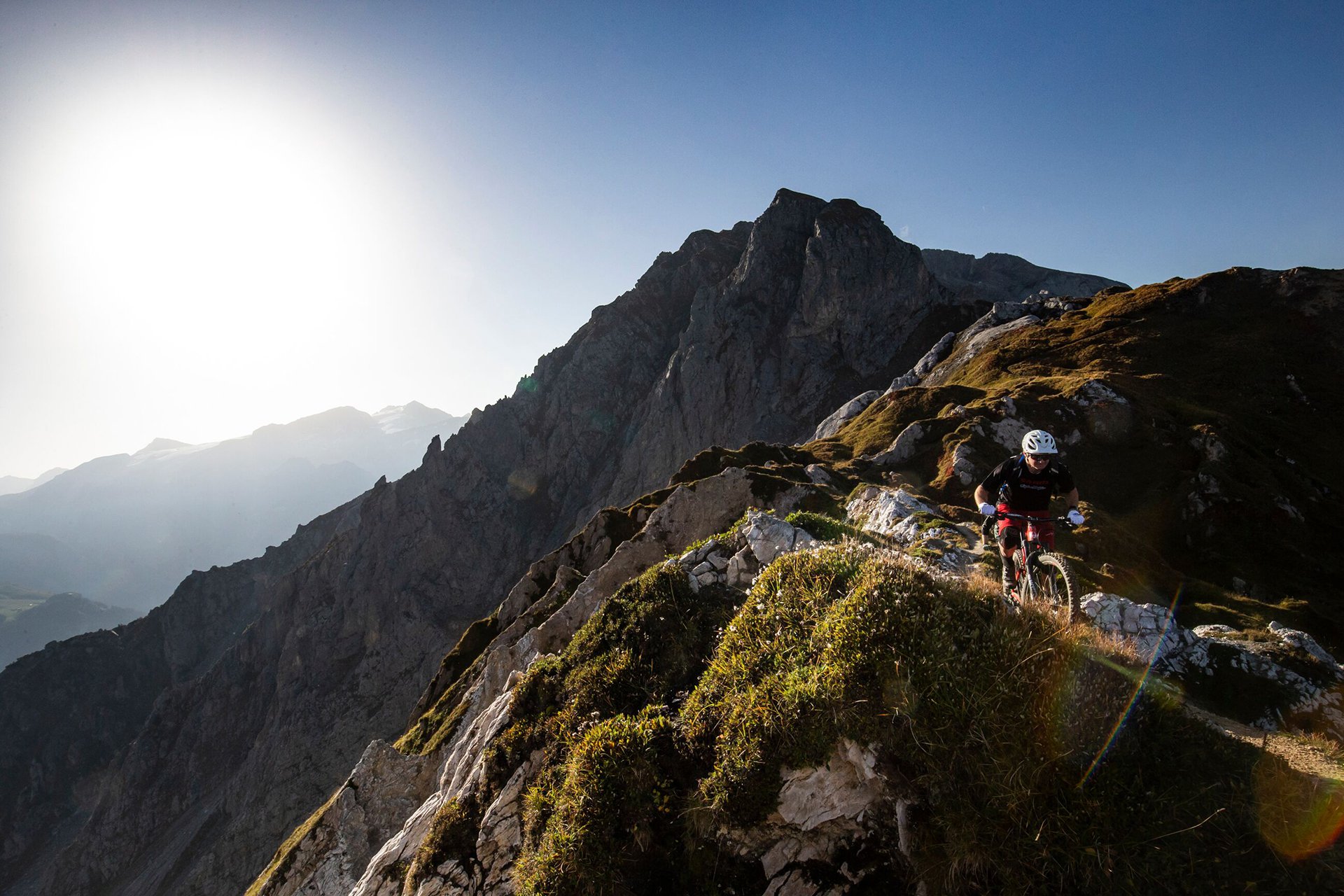
It was important to ensure AXS works in the Alps. Photo - Adrian Marcoux
What do you expect riders to notice and appreciate most? (perhaps this differs for top level racers and Joe rider?)
I think the user benefits are slightly different, but the actual core technology is the same. Actually getting a good shift every time benefits Joe, and Nino. We see that riders shift about 20% more than on a mechanical system. I think that helps provide some clarity to an actual on trail benefit. People shift now, when they didn't before. That means they were too scared, lazy, tired, or just in the wrong gear. It is possible to make a bad shift on a mechanical system under shifting or over shifting happens to the Pros.
What kind of rider(s) does SRAM believe will be most likely to want AXS, or to benefit from it?
I think elite athletes and performance riders for sure. The benefit for them is that they can be under pressure, going full gas and know that the shift will happen. It is possible to make a bad shift on a mechanical system. Over shift or under shift a bit and you can get unexpected results. That's bad for a racer.
But I think that benefit applies to everyone, even a novice or recreational rider. I've put some people on the bike that aren’t enthusiast riders, and they are amazed how easy it is.
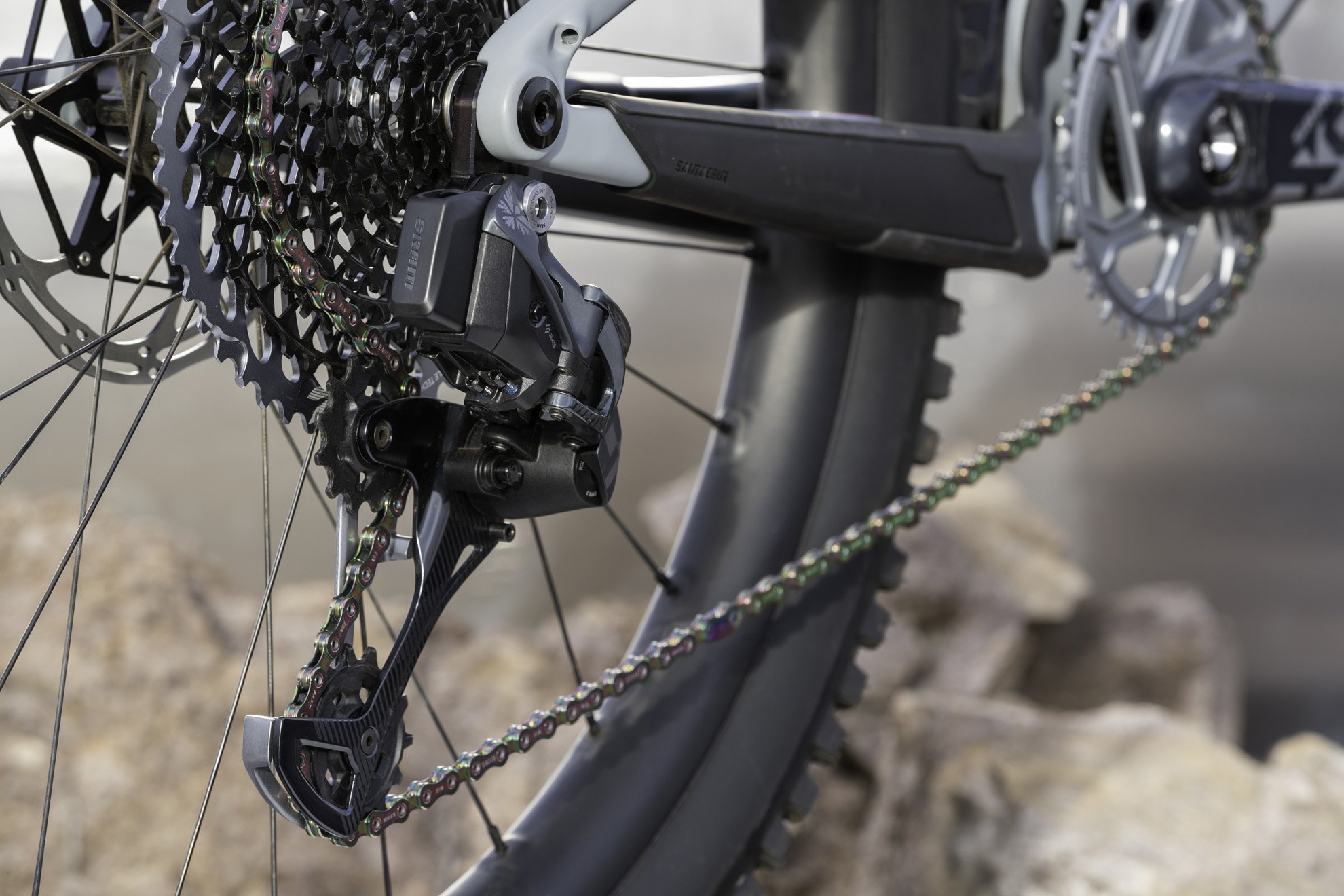
The AXS system's brain lives in the rear derailleur.
I believe the wireless system is proprietary. Would it be accurate to say it's something like Bluetooth? Was it difficult to develop a new system that wouldn't be interfered with by other devices?
We have Bluetooth on board, but it's only for our AXS app connection, and a head unit such as Garmin. We also have ANT+ which is for power meter connection. But neither of these systems control the shifting. That is done by our proprietary wireless system. We tested it through the roof to make sure signal loss was practically non-existent. And not just when riding, but also in high signal contamination areas. Riding with 1000 of your friends with AXS and cell phones and blue tooth speakers on the handle bar is no problem.
Many people have experienced Bluetooth as inconsistent and unpredictable. Your system couldn't work with these problems. How did you make it reliable when Bluetooth is not?
We worked with professional developers to give us what we needed. Blue Tooth has different requirements than our system. For example, it connects to many devices and automatically connects. Ours is connected to a limited environment (1 bike), and it's always connected unless you unpair it. Ours is also designed to carry certain information.
eTap has been around for a little while so SRAM has experience with electronic shifting. Were you able to develop AXS with existing staff or was it necessary to hire from other industries?
Some of the team like electrical engineers and testing were shared, but the actual development teams are different. Mountain biking has completely different requirements than road, and the RD is also a completely different architecture.
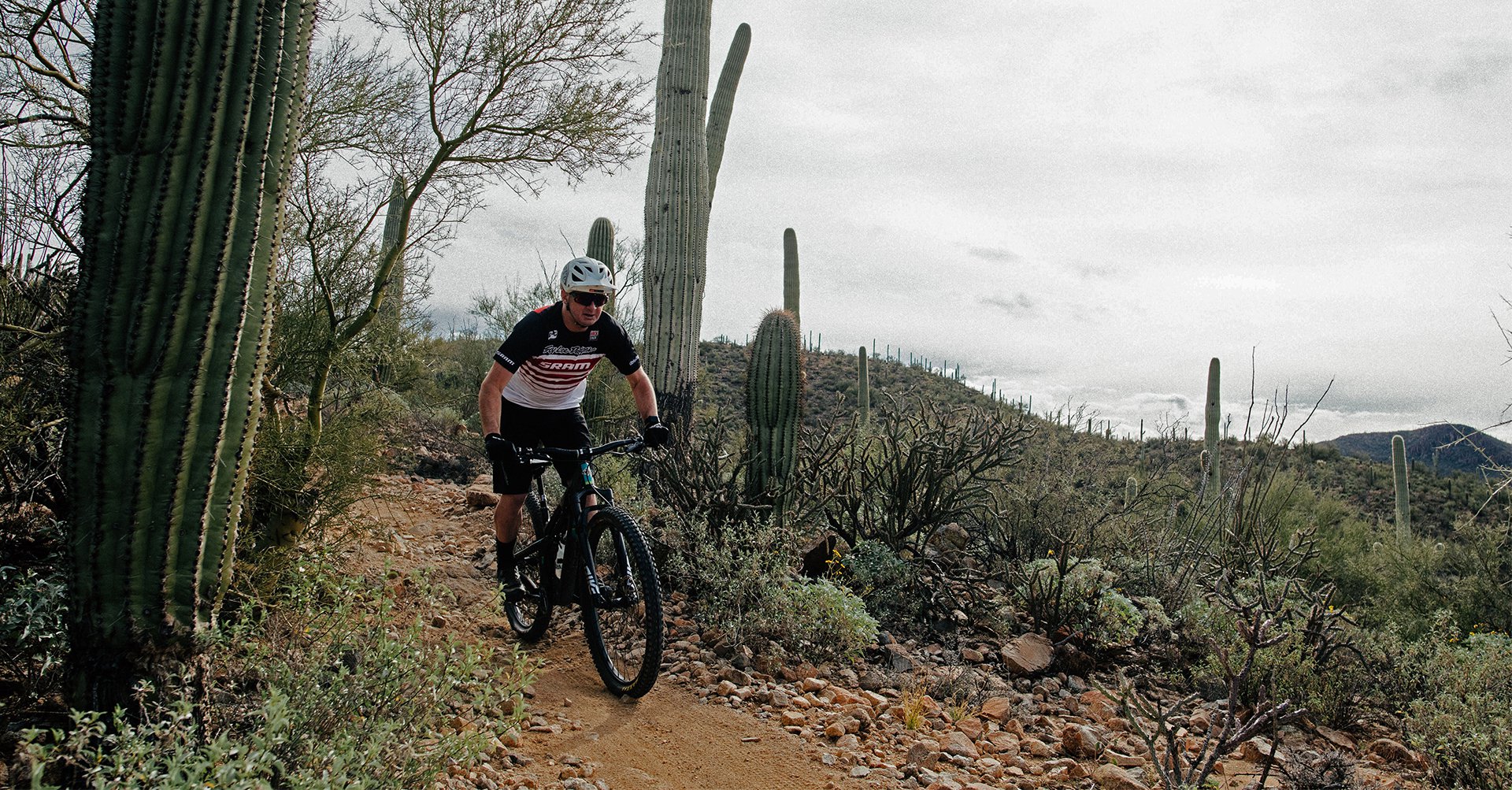
Desert laps. Photo - Margus Riga
Which hardware components, motors, batteries, processors, communication modules etc. were adapted from other applications and which (if any) were entirely proprietary?
We share the battery with existing eTap, new eTap, and the Reverb post. Other than that, most was custom. Motors, gearboxes, switches in the controller were pretty much all custom. In some cases, we worked with existing electronic suppliers to modify what they had. In some cases, like the gear box, it's completely ground-up custom. It's not even shared with our eTap RD. And that gearbox is a painstakingly designed and crafted part.
Aside from customizing the paddle functions, what value does the app provide?
It will allow you to update device firmware, check battery levels, check riding information, and even get service alerts. The App is growing daily in what it can do, and the future applications could be pretty interesting. You can also save multiple bikes on the app. That being said, you absolutely don't need the app to setup or ride your bike. The system will work without it.
What sort of information can be collected about riders using AXS?
Nothing. If users are paranoid they can log in as a guest. Perhaps in the future if riders wanted to share something with us it could be possible. Like say a diagnostic report for troubleshooting.
I assume riders will have to opt in if their information will be made available to SRAM?
If we pursue this feature, then yes, it would be 100% with their permission.

Paddle customization (using the AXS app) means the left paddle (used for the AXS Reverb by default) could be a downshift while one of the left paddles could engage your dropper.
What do you think will be the most useful in terms of future product development?
I think getting rid of Reverb cable and RD cable can make frame progress quite a lot. Look carefully at a bike today and consider all the compromises required to get those things where they need to go. Plus cost, weight, and time.
But otherwise I see AXS Eagle as a first step for us. There is a lot of potential for evolving they system and making a wild variety of configurations. It's a great product for experimentation, if that's your thing. If you ride Cross or Gravel, you could put drop bar controllers on an Eagle rear end. That hasn't been possible before.
How is it that the system is able to better shift under load than a human can?
Part of it is human hesitation. Smart riders are always cautious about shifting under high load, and that can cause miss shifts. User error basically. Sometimes people just avoid it. Like getting out a tough climb when you really need an easier gear. Because we control the shift speed and exact location of the RD, it's simply more reliable.
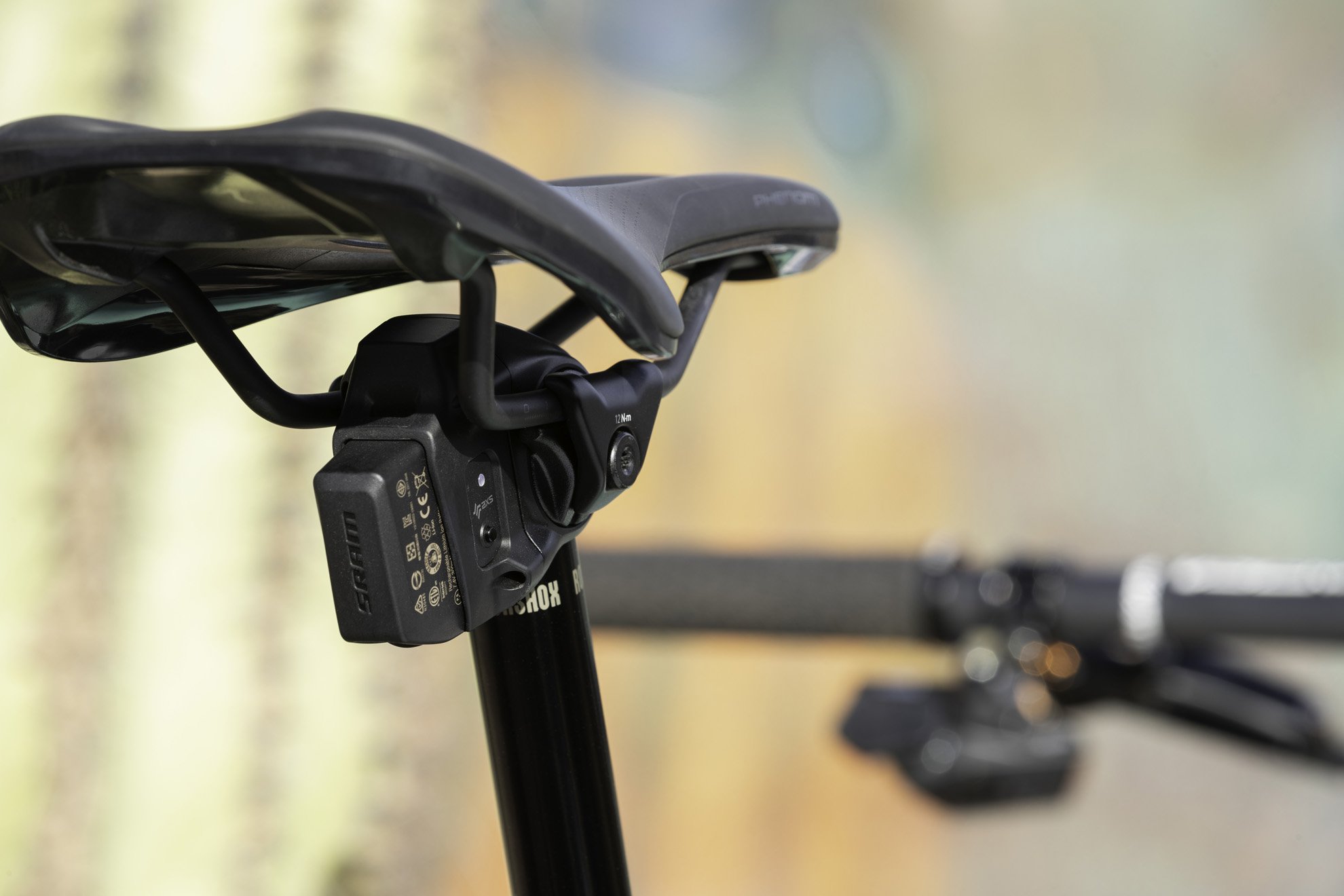
The derailleur and post use the same battery pack and can be swapped in the field if one goes dead. We are told they weigh just 20 grams, last for 20 hrs of riding, and will reach full charge in an hour.
Have you smacked your derailleur and experienced the Overload Clutch?
I have done it myself, and I have it happen to others first hand. It works.
Has AXS changed the way you ride? If so how?
Yes, I shift more, I shift in high pressure situations, and I actually enjoy the system. It's really fun to ride. Likewise, I think people will use the AXS Reverb a ton more. It's so easy and light, you can constantly micro adjust.
What do you appreciate most about AXS? In which situations do you find it most useful?
Well, I'm supposedly a drivetrain specialist, so I just enjoy it for any type of riding. The ease of use and reliability of shifting properly is really next level
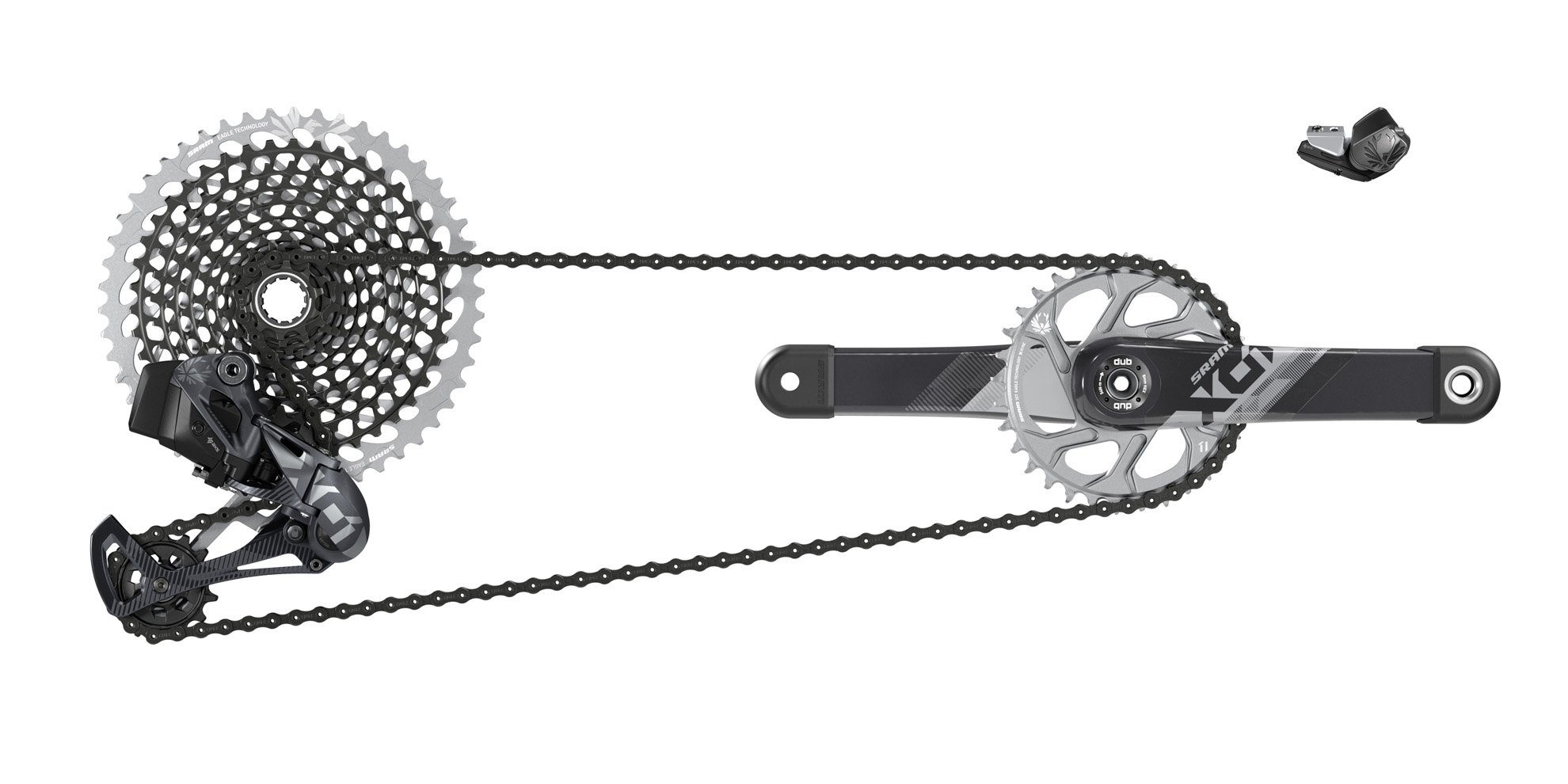
The chain and cassette are the same, other than the pretty rainbows on XX1, as is the crank, but the derailleur architecture is all new and features 10mm more ground clearance.
From the design brief, what were the problems your team set out to solve with AXS? in other words, what are its stated goals as a group, and were there any additional benefits you uncovered (or challenges you didn't expect) along the way?
Well we spent several years on this project. It allowed us to watch the market and see what's going on. As you know, other people have built electronic drivetrains.
Our main goals were to make it work for mountain bikers. My motto was 'Right is better than right now.' That made some people fidgety. But I truly believe it was worth it. we truly learned something new every week for a long time. We may have underestimated the time frame to get some of our electronic components in development. As you can imagine, the electronics industry may not rank the bike industry most important.
Given the success of the trickle down process with Eagle (both speed and quality), what will be the unique challenges with trickling down AXS to lower price points? Are there enough potential cost savings that a GX AXS group will be viable in a 1-2 years’ time?
Our main goal and focus right now is to have 100% quality production, deliver to our customers on time, and make sure we support the product in the market.
It is feasible to reduce cost, but keep in mind it's basically a very precise mechanical derailleur. With a bunch of expensive custom electronics. So simply changing some materials and hardware has a significantly smaller impact.
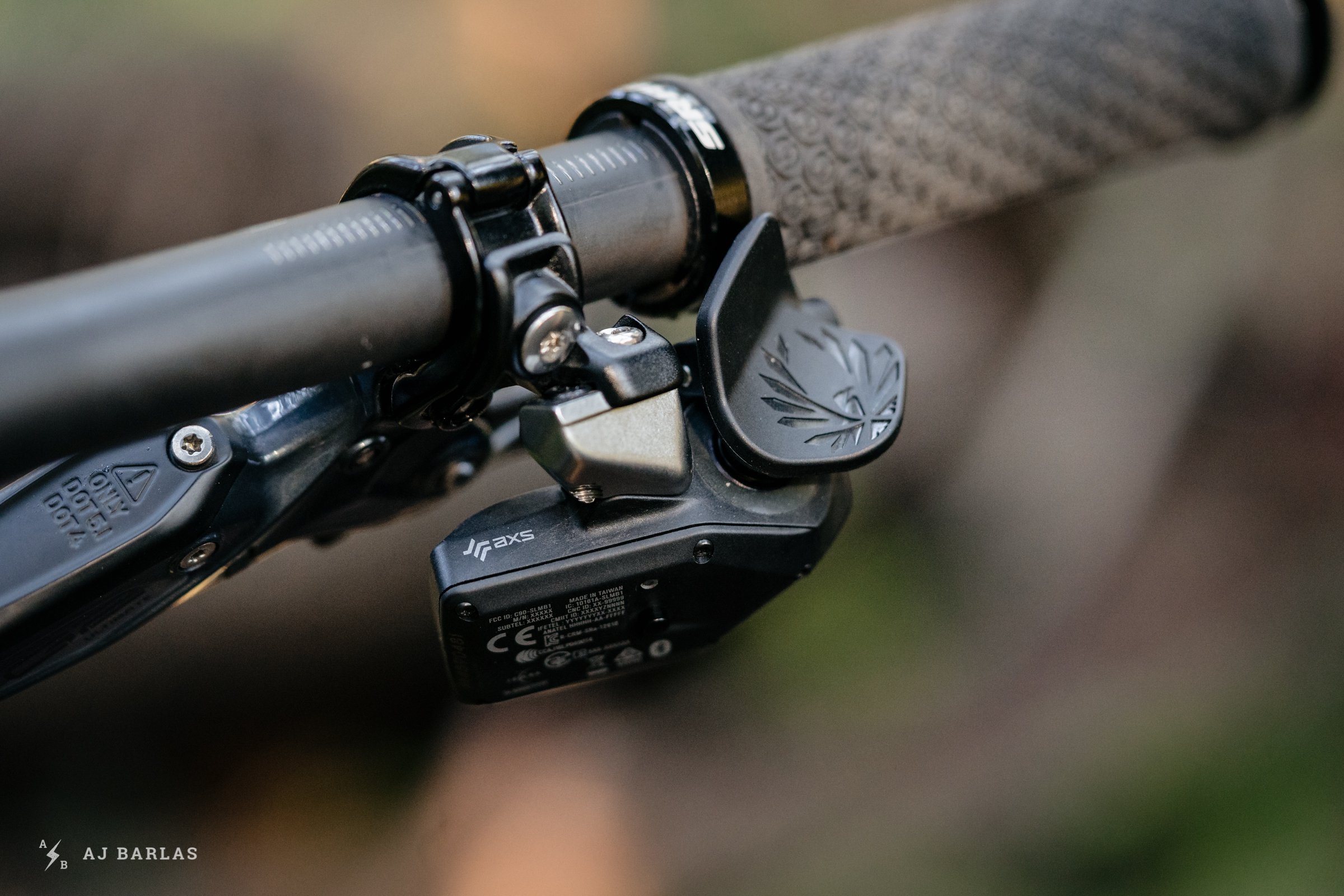
The paddle is the only part of the system that takes a little getting used to. Photos - AJ Barlas
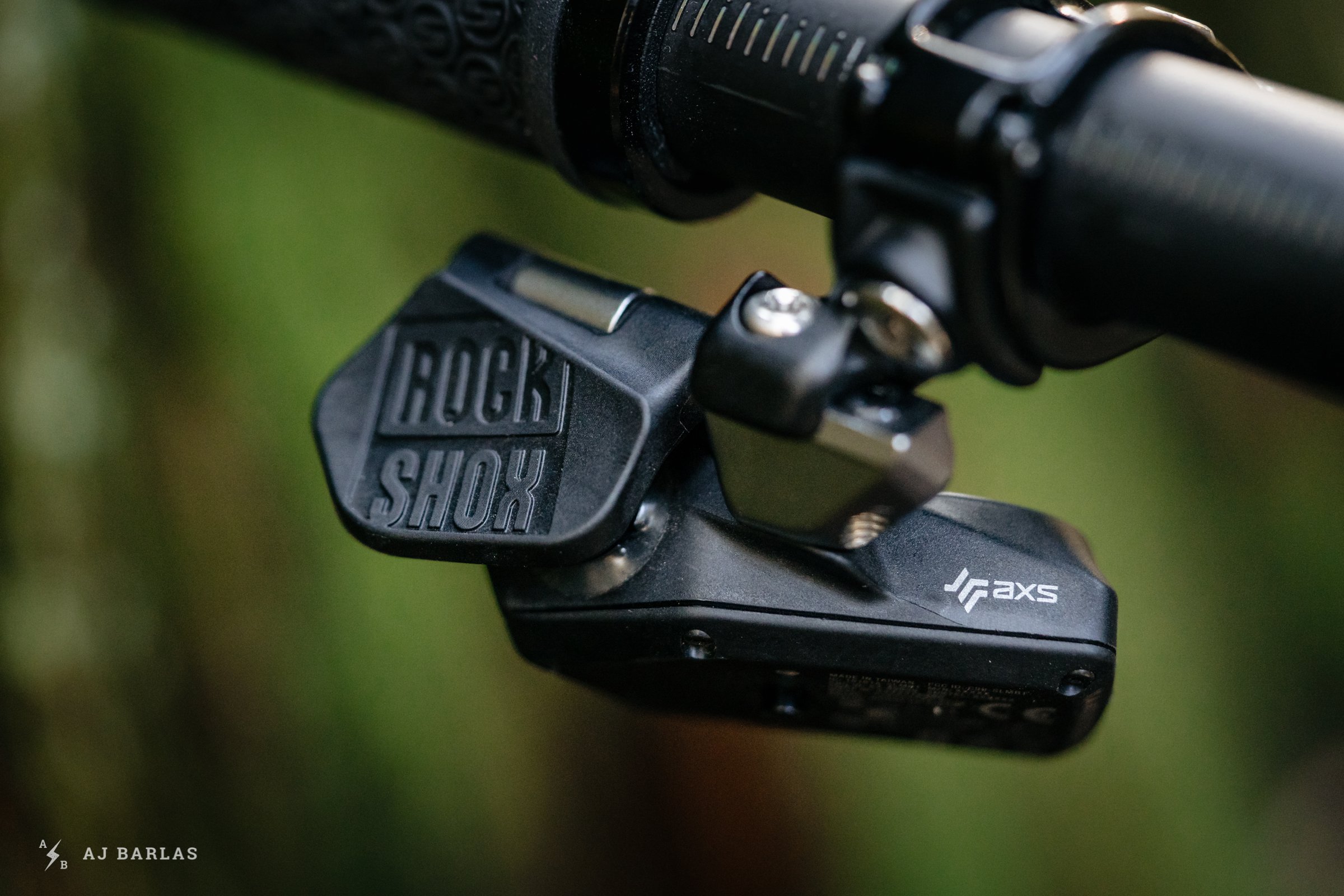
Untethered.
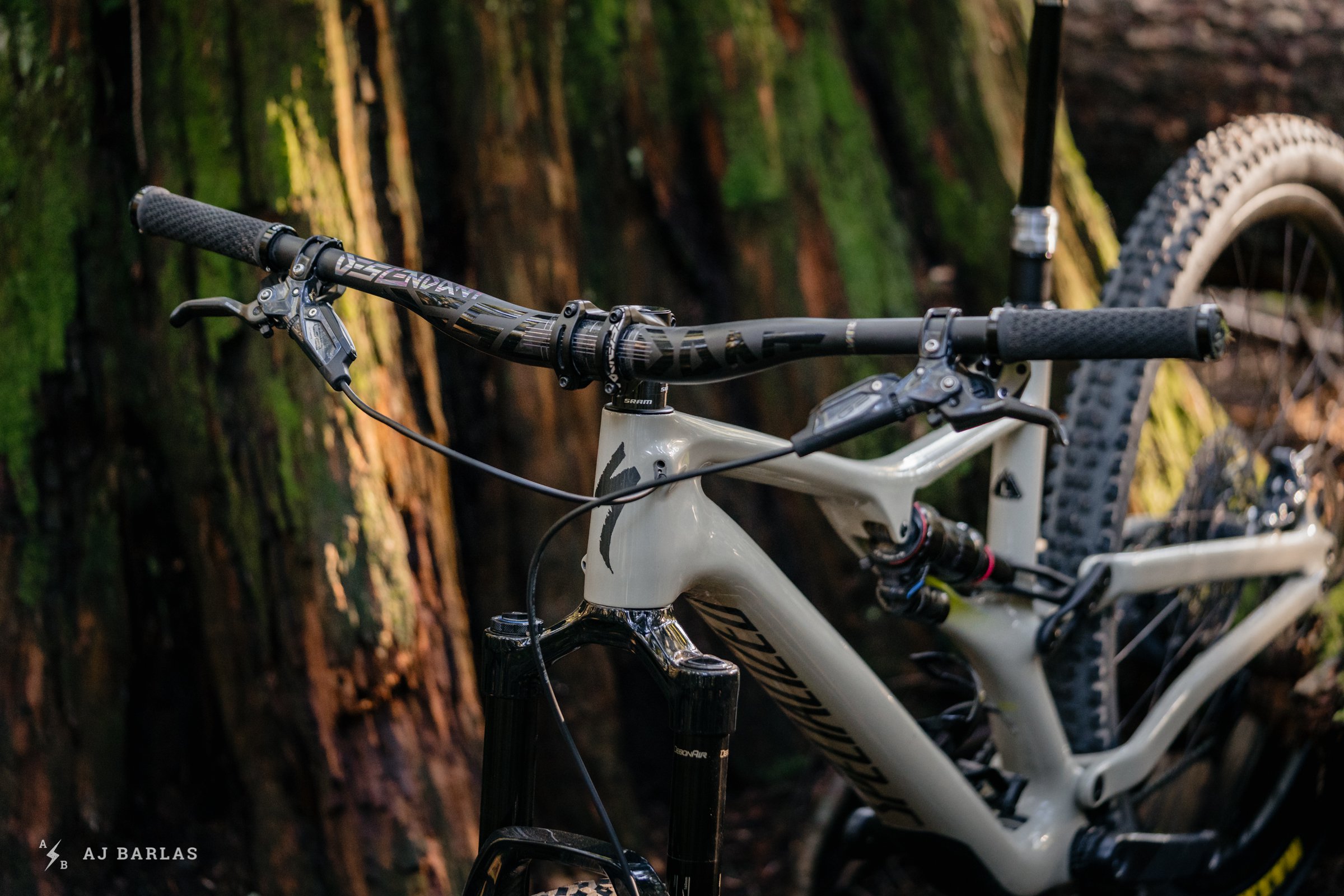
Clean bars.
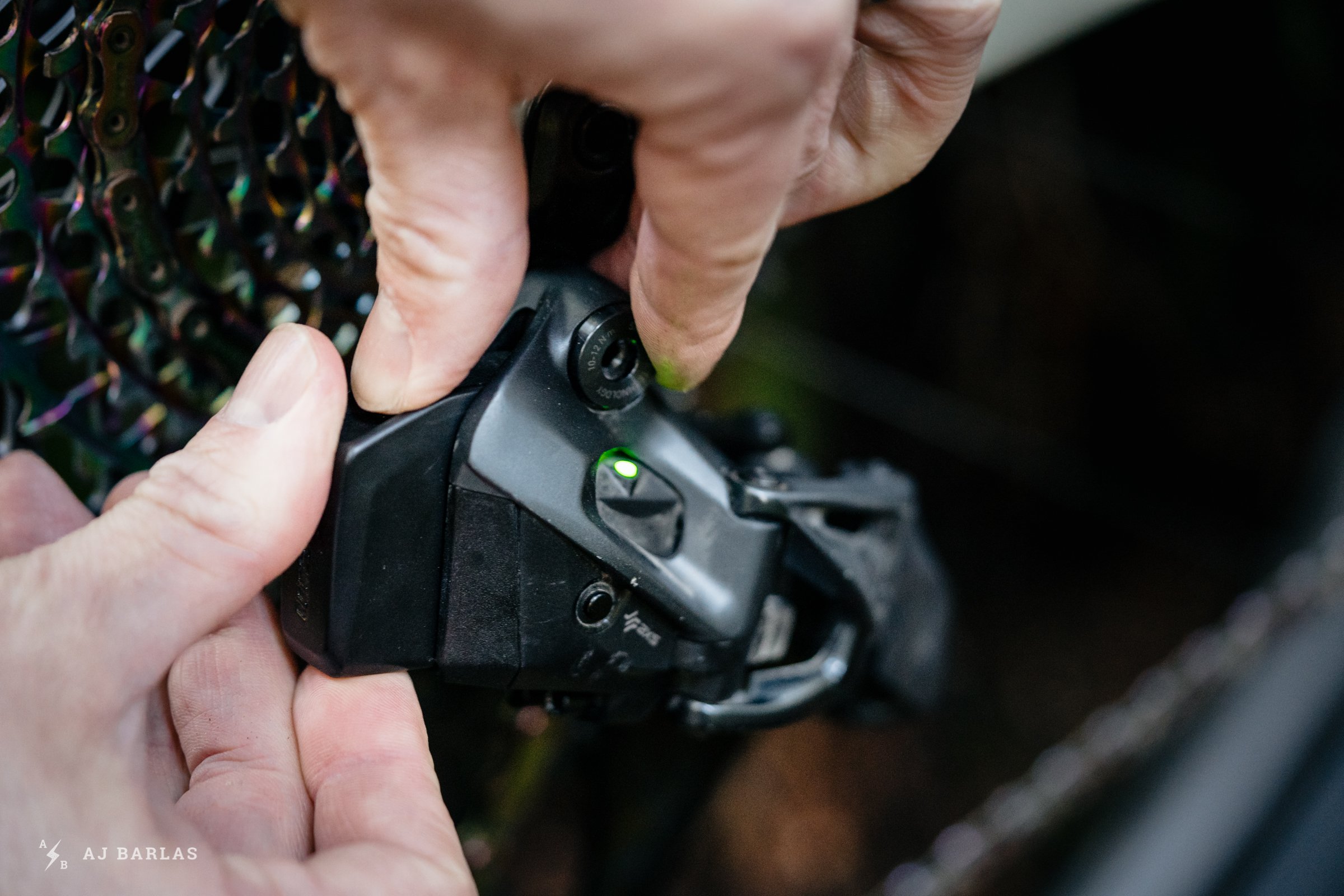
Battery removal.
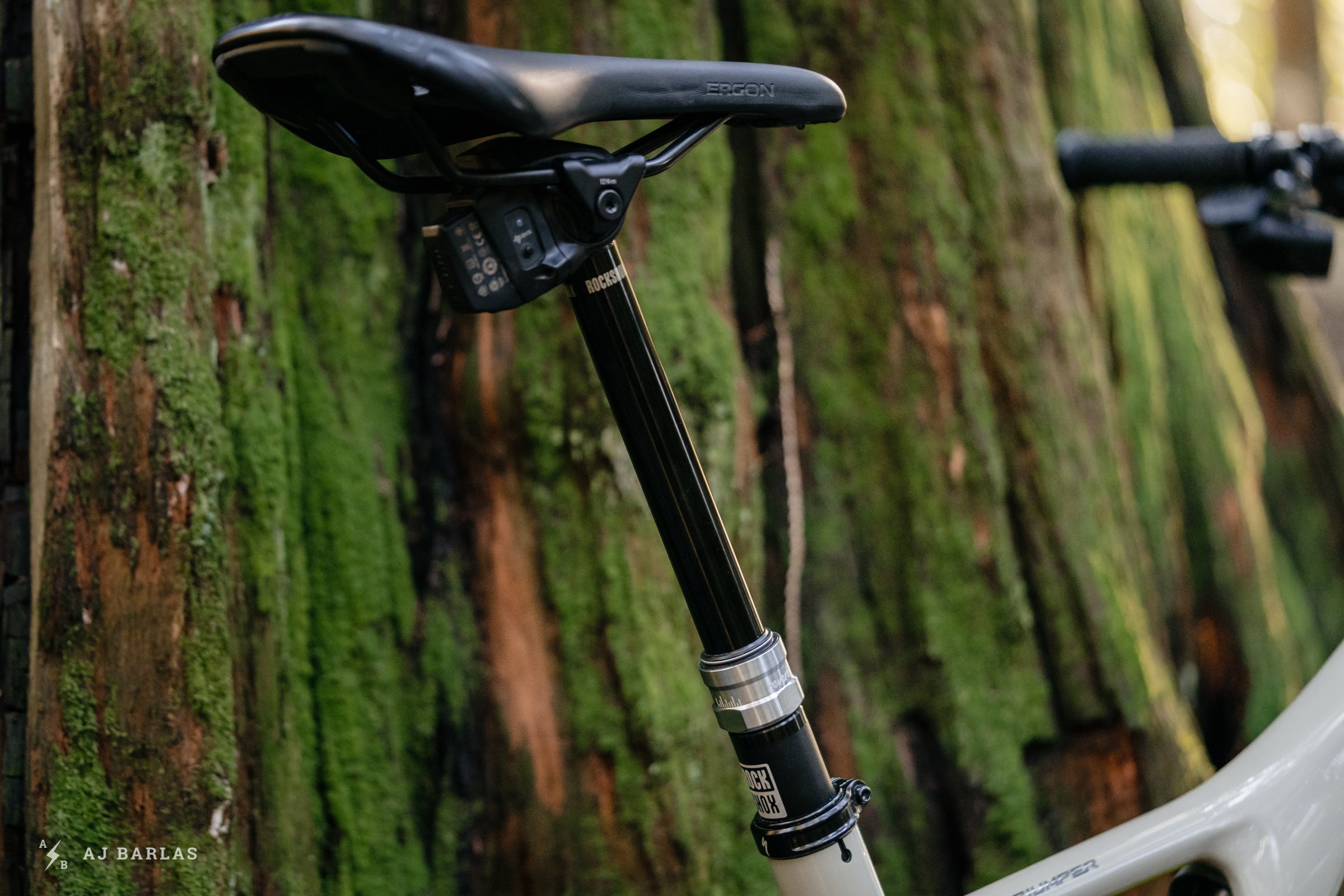
Install time for an AXS Reverb? Just a few minutes.
Was SRAM's electric MTB group always going to be wireless, or did you start with a wired version and switch gears mid-stream?
We always set out to be wireless, but were open to consider the fact that it might not be the best path. However, I think it is. I expect this system can help frames get even better, lighter and potentially cheaper. All the internal tubes required for routing cables, consideration of where the cable has to rout to not have shifting problems, can be limiting to frame designers.
How long a process has this been? When did AXS development work get underway, and can you walk us through the major milestones so we have an idea of how long this all took?
We built the first prototype about 5 years ago. We then built V1 and V2. Keep in mind, the creation of this project and the emergence of Eagle are pretty close. So our first prototype was 11 speed. Then as Eagle was introduced, and grew in popularity, we had to turn the heat down a little bit.
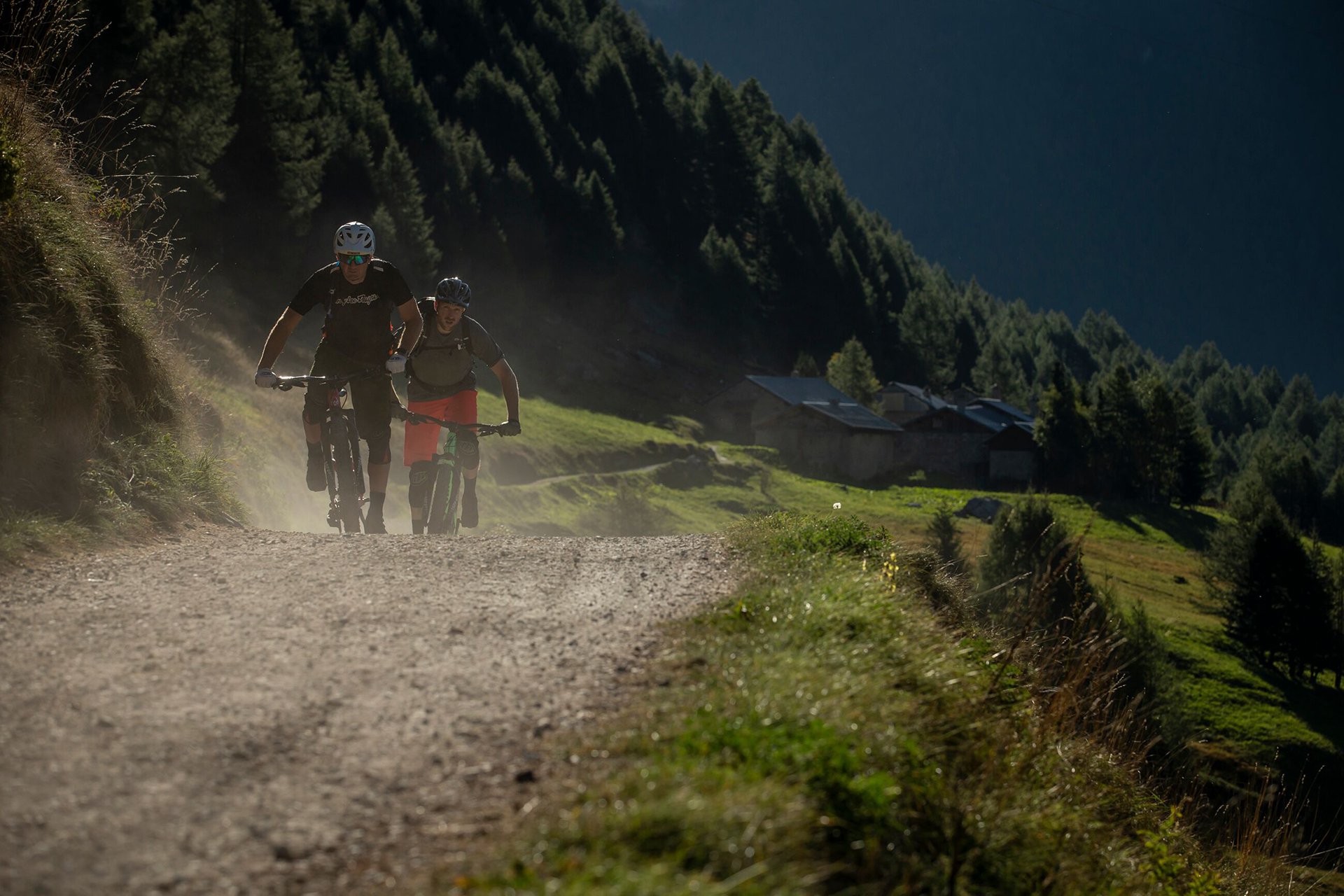
Chris chased by Ross Measures Photo - Adrian Marcoux
Can you give us an idea of how much ride-testing went into AXS? We were told it's been ridden for a couple of years, and that dozens of test groups were under riders for that time ¦just what kind of magnitude of test riding has gone into this group
We have been seriously testing it in our documented program for over 2 years. We have about 50 riders all over the world testing, these riders cycle in and out depending on weather, etc... at the moment, it's about 6000 hours and 80,000 km of documented test riding. That means the riders log every ride, document any issues, and report back on any findings.
In addition to that, I have another half dozen or so people that I use to tell me somewhat more abstract stuff. Would you buy it? Do you like it? Is it better than mechanics? Stuff like that. Those are the things a bike riders ask, they assume we will sort out any technical issues.

Some SRAM testers have a little race experience. Nino Schurter telling Chris what's up.
What were some of the biggest challenges of the project?
Time and convincing People that taking our time to do it right is better than right now but not quite right!
Is there an element of the project you are most proud of?
Ask me when the first mountain bikers buy it and ride it. At the end of the day, we are making bike parts for sale. The People get a vote on the success of every product. That vote is their dollars. I hope people that buy it, enjoy it, and feel like it's makes their ride better.







Comments
legbacon
5 years, 2 months ago
I am retired, not from dentistry though, and work PT in a shop and can get a great deal on the latest drivetrain, but am still on my old XT 11 speed.
Reply
legbacon
5 years, 2 months ago
When I first read about this, my reaction was "so what". Shifting has the least performance benefits for my riding. My dollars go to suspension, wheels, tires, and a non-Reverb dropper.
Reply
Cam McRae
5 years, 2 months ago
Fair enough. And if you are already on Eagle your shifting is probably pretty dialled right now. Of course there are others who are already maxing those areas and aren't price sensitive. #dentists
Reply
Vik Banerjee
5 years, 2 months ago
"In fact, we will certainly continue developing mechanical systems."
Thank you.
I will certainly keep buying them. :)
Reply
LWK
5 years, 2 months ago
"Our main goal and focus right now is to have 100% quality production, deliver to our customers on time, and make sure we support the product in the market." subtle dig at the other S? LOL
it looks cool and well done but I tend to agree with legbacon regarding my bike parts priorities
Reply
Timer
5 years, 2 months ago
The part about quality production is certainly more of a dig at their own product history.
Reply
Allen Lloyd
5 years, 2 months ago
I conceptually like this, but the price and battery concern me. Where I think this could have some huge benefit is if connected to gps and riding history. Imagine if the bike knew a hill was coming up and it automatically shifted for you. Some cars use similar tech to shift based on gps data.
My fear is people will just start using this with Strava to prove they are pushing a bigger gear on the trail :(
Reply
Timer
5 years, 2 months ago
Where would be the fun in that? Add auto-steering and you can skip the whole "mountain bike" thing and just stay at home on the trainer.
Also, from my understanding, GPS is nowhere near accurate enough for such an application. Not even on roads, certainly not on any kind of technical climb.
Reply
Pete Roggeman
5 years, 2 months ago
Interesting thought, but way too many variables to let a machine determine what gear I should be in. Conditions, whether I'm trying to go as fast as possible or meandering, how I'm feeling that day, etc.
Reply
IslandLife
5 years, 2 months ago
So... though he was being a bit cagey, it did sound like he was kinda saying that there will not be a "GX version" of the derailleur/shift pod in the future. Sounds like it will remain a high end product. Which does make sense. Doesn't sound like you can really change the tech inside it just to get a lower end cheaper version... fair enough.
Reply
Jonathan Friesen
5 years, 2 months ago
I find it funny when people get resentful when they see high end products and their price tags. Stuff like this has to exist in order to progress. I went to from XT to Eagle, yes it shifts better, yes it cost more. Dollars spent to performance gain? I don't know. I make far less money than a #dentist married and I have a kid, mortgage etc etc. I simply budget and choose what I want to spend my money on. I think it's pretty cool that an average dude like me gets to ride a top tear drivetrain. And it's worth every penny, just like AXS.
Reply
Please log in to leave a comment.